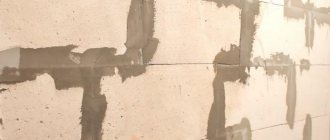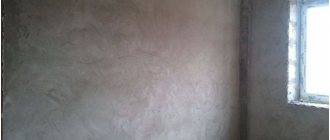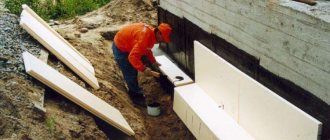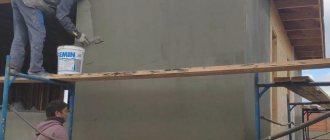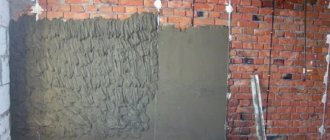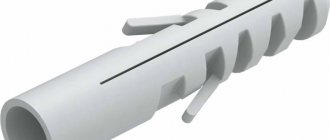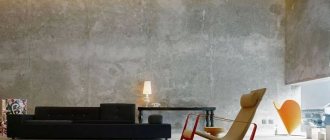An obligatory component of any renovation is wall decoration, without which no private house or modern apartment can do. This way not only provides a beautiful appearance, but also creates protection from damage. Recently, many new interesting materials have appeared, among which silk plaster occupies a special place. This solution can be applied to any home; the decoration will look very elegant and original. To create a truly beautiful design with a luxurious and elegant finish, you need to learn how to apply this unique material correctly.
Types of silk decorative plasters
One of the most sophisticated modern coatings is considered to be a coating that imitates a silk surface. If you look at it from different angles, you can observe a fantastic play of light, thanks to the mother-of-pearl fillers. Different designs create the illusion of translucency of the walls. All these effects are achieved by finishing the wall surface with a unique material - silk decorative plaster.
This miracle appeared on the building materials market in the 90s of the last century. Such plasters were imported from France, Turkey and even Japan. It was one of the most expensive and prestigious materials. However, something inexplicable happened. The demand for silk decorative plasters is not very high
This is because wealthier buyers were already fed up with this type of wall decoration and switched to newer ones, while less wealthy buyers did not dare to pay attention to this material, still believing that it was expensive. Although foreign manufacturers have long ago lowered the price level to $13 per 1 kg of the mixture, domestic manufacturers have long mastered the technology of its production and sell silk decorative plaster even cheaper - from $3 to $16 per 1 kg
Plasters of this type with the addition of artificial silk are widely represented on the building materials market by fairly well-known companies:
- "SILKOT" Japan;
- "Senedeco" France;
- "BAYRAMLAR" and "SILKOAT" Türkiye;
- “RODNIK-ART” and “PEACE TO YOUR HOME” Russia.
Silk plaster with artificial silk comes in different textures and compositions. Depending on these indicators, its price is calculated. It ranges from $2.5 to $25 per package, which can be used to plaster from 3m2 to 5m2.
Plasters with the addition of natural silk fibers are presented on the building materials market:
- FUDZIVARA CHEMICAL Co. Japan. These are 14 types of decorative silk plaster made in several colors. Such plasters are now quite rarely found on our market;
- "BAYRAMLAR" Türkiye. All wet silk decorative plasters produced by this company contain natural silk additives. Of course, this influences their high price points;
- “PEACE TO YOUR HOME” Russia. This manufacturer’s product range also includes one type of plaster with the addition of natural silk. The cost of one package of such plaster is about $9.
Required Tools
Decorative silk plaster can be applied in different ways. Depending on its type, as well as the method of application, various special tools are needed. This section describes the equipment that will be useful to the master in any case; the special tool will be indicated later.
List of required tools:
- Spatulas with rounded edges - these spatulas do not leave grooves;
- Venetian trowel. Depending on the surface area and desired pattern, the sizes of the trowels will vary;
- Roller;
- Containers for solution;
- Drill and mixing attachment. This tool is only needed when working with large volumes.
Accessories:
- Gloves;
- Respirator;
- Covering material;
- Bucket for water;
- Rags;
- Protective glasses;
- Masking tape.
You can do without some of the above when working with a composition such as silk plaster. Having all this will not only help you with your work, but will also ensure your safety.
What is the material
There is a misconception that silk plaster and liquid wallpaper are the same material. This confusion is due to several reasons.
Firstly, both products can create a “silk” surface. But this is achieved in different ways. Thus, liquid wallpaper contains the main components in the form of silk or cellulose fibers. It is the components that ensure the desired result. Plaster acquires the desired effect due to the application technique.
Secondly, some manufacturers indicate that the plaster contains cellulose threads and silk particles. Yes, such substances are included in decorative mixtures, but they are not the main components, their content is insignificant.
In fact, silk decorative plaster includes particles of mother-of-pearl that have reflective capabilities (the rest of the components are standard). They are the ones who create overflows. To achieve this result, it is necessary to apply very thin layers, each of which will be no more than one millimeter. It should be noted that the number of layers can be from two to eight.
Painting
White non-woven wallpaper in rolls is usually used for painting. It is not recommended to paint liquid wallpaper - when adding color to the solution or painting an already hardened coating, the possibility of restoration is lost if necessary.
However, if you wish, you can change the color of the material using any water-based paints (water-based emulsion). They are applied over the silk coating with a roller, brush or spray gun.
You can read in detail about painting decorative plaster in our articles.
Silk plaster is one of the easiest ways to create an original interior with your own hands. The coating costs less than decorative plaster, and if handled correctly, it retains its magnificent appearance for many years.
We hope that the article was useful to you. Leave your feedback and questions in the comments below.
Previous
Decorative plasterMoroccan plaster Tadelakt
Next
Decorative plasterCool “wood-like” decor from ordinary plaster
Advantages and disadvantages
Decorative plaster has a lot of positive properties:
- Environmental friendliness. The material does not contain harmful substances that may have a negative impact on human health.
- Fire resistance. The mixture is not subject to combustion, therefore it is not a fire spreader. It also does not release toxic components when heated.
- Durability. The service life of such coating is tens of years. Excellent resistance to mechanical stress.
- Possibility of application to any surface. Indeed, the solution can be laid on different types of substrates.
It should be noted that there are also some disadvantages:
- High price. If we assume that lining 7 square meters (using a roller) requires 1 kg of mixture, then taking into account the number of layers it is not difficult to calculate the consumption and the final price.
- Difficulty performing the work. To get a truly amazing result you will have to make an effort. But this is a drawback of all decorative solutions.
- Difficulties of restoration. In fact, repairing a damaged area is quite simple, but the difficulty is that it is almost impossible to restore the desired effect. Especially if the coating has patterns or designs.
Composition of plaster, areas of its application
Silk decorative plaster is used on fairly smooth surfaces; small defects are acceptable: the material is plastic, so it can hide minor cracks or smooth out curvature.
Noble decoration is appropriate both in an apartment or private house, and in official institutions. The coating will complement an elegant, strict or bold extravagant interior - its appearance depends on the components.
Silk plaster includes quartz chips to form a special structure. Among the producers of such finishing materials, French and Italian factories are the leaders - this is a product in a more expensive segment. The quality of goods from Turkey and products of some domestic brands is quite acceptable.
Each consumer can choose a dry or moistened type of material. The dry type will be convenient for moving and storing. It is preferred by those who are not sure about the timing of the start of repairs.
Wet silk decorative plaster is made with your own hands from liquid and dry components, which must be mixed according to the instructions. A rich color palette, special types - for example, with the addition of glitter or crumbs - will allow any consumer to choose the right option.
Variety of shades
The palette of silk plaster is represented by a huge number of available colors. The basic tone is white, there are also standard shades - silver, golden, milky, beige, peach, grayish, light blue, pale pink. There are colors in the palette for bright interiors - options of green, burgundy, orange, yellow, turquoise, blue, brick and sand tones. You can choose cool grayish shades or warm mint, coral, caramel and lilac. It all depends on the imagination and sense of taste of the designer.
Blue plaster Source remont-decor.in.ua
Application of decorative plaster
For application you will need the following tools and materials:
- Plaster is sold ready-made. Additionally, you can purchase colors.
- Trowel.
- Putty knife.
- Roller.
The technological process is as follows:
- The first layer is the base one; it will serve as the basis for further activities. It is applied in a thin layer. The work is done using a spatula and trowel. The mixture is collected in the required quantity and placed on a trowel. The tool is applied to the surface at a slight angle, movements should be smooth.
- The resulting surface is left for several hours. It should dry out enough. The exact timing indicators must be clarified in the manufacturer's instructions.
- The second layer is applied in the same order. But it must not be allowed to dry out, so the relief is formed immediately. The trowel is used to perform arc movements that create the required pattern. It is slightly smoothed.
Roller usage:
- The base layer is applied in the same way as in the first case.
- The subsequent layer is applied using a roller with a short question. They cover the required area. The mixture is laid without flaws, completely filling the selected space.
- Next, a trowel is used. They literally smooth the surface. The selected texture is formed with jerky movements.
Do not use a long-haired roller. It leaves behind a thick layer of material that is very difficult to process.
Creating a “velvet” surface
The work is carried out according to the following principle:
- The solution is applied in a layer that should not be too thin. This is because everything will be done in one step. The trowel must be used to make random strokes.
- Next, the necessary invoice is formed. The trowel is passed over the coating; movements should be jerky, without excessive pressure.
- The removed mixture will remain on the instrument. It is removed with a spatula.
- The entire area is processed, after which it is left until completely dry.
To get the result that was intended, you need to practice a little. The main thing is to understand the specifics of formation.
Advantages and disadvantages of wet silk coating
Like all decorative coatings, wet silk plaster has its pros and cons. As usual, let's start with the positive characteristics.
- Stylish design. The rich appearance of the coating with a mother-of-pearl sheen truly looks luxurious and unique.
- Possibility to choose any coating color down to the smallest shades. You can tint the material either yourself, manually using tinting paints, or automatically, which is more preferable to obtain a high-quality result.
- This is a seamless coating, which, unlike wallpapering walls, does not have unsightly joints.
- Can be used in any room, as the coating is environmentally friendly and waterproof.
- The wet silk coating is easy to keep clean - it can even be washed with a wet sponge, while the preservation of the original appearance is guaranteed by the manufacturers. It also allows the use of household chemicals and even solvents.
- If necessary, you can easily make minor repairs to individual surface fragments.
- Durability - manufacturers guarantee 20 years of impeccable service life.
Another advantage is attributed to this coating - ease of application, which, according to the manufacturers, can be done even by a novice repairman without experience. But it is not so. If you want to get a really high-quality result that will please you for many years, then it is better to invite a professional to apply the plaster.
Also, as an unreliable advantage, it is necessary to mention the absence of the need to prepare the surface for applying decorative plaster. Some resources convince us that there is no need to level the walls, eliminate potholes, cracks and chipped surfaces. However, this is also a very big misconception. It is always necessary to level the walls, and in our case this must be done with special care. After all, a perfectly flat wall is the key to a high-quality result.
The disadvantages include the high cost of this type of coating and the requirements for a perfectly flat base, which we just talked about. That's all. Instability to moisture, which is also often attributed to disadvantages, is not such, and the coating perfectly resists even direct exposure to moisture. Let us remind you that walls with this plaster can be washed with a wet sponge.
Some nuances
This material is very demanding on surface preparation. Although it can hide small cracks, other defects will be noticeable. Therefore, it is necessary to eliminate any shortcomings.
It is worth paying attention to some features:
- Avoid using products called fiberglass. It can damage the decorative layer. This is due to the fact that the material has good absorbency, which even a primer cannot level out.
- If metal beacons were used to apply the starting composition, they must be removed. Otherwise, there is a high probability that traces of corrosion will form.
- Walls in rooms characterized by high humidity are treated with moisture-resistant impregnations. Antiseptics are applied in advance, which should protect against fungus and mold.
Many manufacturers of silk-effect plaster recommend observing certain time intervals. Namely:
- block walls must withstand an interval of several months after the starting coating has been applied;
- for brick walls the period is up to six months;
- if the work was carried out in winter (in frozen rooms), then the decorative layer is laid only in summer.
Creating the effect of silk threads
“Silk threads” is a technique for applying decorative plaster, with the help of which a relief coating is obtained with long and thin vertical stripes across the entire surface. To create it, use the same acrylic plaster that is used for the “wet silk” coating.
For work you will need: the same tools + a decorating brush or a brush with stiff bristles.
Application technique:
- Prepare the base, apply a primer and leave until completely dry (12 hours).
- Cover the prepared surfaces with 1-2 layers of interior paint. Thanks to this, the hardening time of the plaster will increase, which will allow high-quality “threads” to be formed on the surface. Allow at least 2 hours between coats to allow the paint to dry.
- Acrylic plaster is thoroughly mixed and poured into a cuvette.
- The composition is applied using a fur paint roller. Layer thickness – up to 1 mm. If applied evenly, each square meter will require about 500 g of plaster. If they work alone and the surface area is large, treat 1 m² areas sequentially.
- While the material is not dry, use a plastic decorative brush to form the necessary relief. To do this, apply a brush to a wall covered with plaster, move it up and down, creating long vertical stripes.
- Before the solution hardens, you need to smooth the surface with a plastic spatula. During the process, excess composition will collect on its working edge; it must be removed with a clean rag.
- After the desired relief has been created on the surface, it is left to dry for 24 hours.
- Proceed to creating the finishing layer. Apply decorative varnish using a paint roller. While it is still wet, remove excess with a Venetian trowel. The pearlescent pigment penetrates into the recesses and is almost wiped off from the smooth surface, emphasizing the relief and enhancing the decorative effect. The varnish dries within 24 hours.
How to make “silk threads” in the interior yourself is shown in the next master class.
Silk-like decorative plaster is an elegant coating that is practical. Using various techniques, you can use it to decorate the walls of your kitchen, bedroom or living room in an original and stylish way.
Previous Decorative plaster “American” - a quick way of decorative plastering Next Decorative plaster Shagreen from plaster: cheap and quick wall finishing
Preparing the mixture
You can prepare silk plaster with your own hands, in the literal sense of the word.
For this work you will need a container, water and the mixture itself. The preparation steps are as follows:
- To create a solution of silk plaster, you will need to heat the water to 35 - 40 degrees. What is needed is warm water, since cold water will not be able to dissolve the adhesive components, and hot water will lead to the loss of the properties of the mixture. First, pour the glitter into the container, mix thoroughly, and then after 5–10 minutes add the rest.
- Mix the plaster only with your hands! Therefore, this process can take a long time. To protect your hands, you must wear high rubber gloves. As soon as the solution acquires a homogeneous consistency, it is left for 20 minutes to “rest”.
As soon as the solution is ready, you can begin plastering the walls.
The processing itself looks like this:
- With gloved hands, you take a lump of the mixture and press it against the wall. It can also be applied using a trowel. The tool is used to smooth the solution, starting from the middle towards the edges. The layer thickness should be approximately 0.2 mm, otherwise the mixture consumption per square meter will increase.
- To handle corners, use a special narrow spatula. To process the ceilings you will need to install scaffolding.
- If flaws occur, they must be immediately eliminated with a spatula, and new plaster must be applied to the area.
- When you want to create a drawing or pattern, in addition to the material you will also need a filmoscope and a stencil. The projected image is outlined with a pencil on the “bare” wall, and you can immediately mark which colors are needed and in which areas. Plaster is applied in the same way as when treating the entire wall in one tone. If necessary, use a spatula to adjust the boundaries of the pattern or design.
If you want to add effect to the interior, it is recommended to light the doors or stairs (if the renovation is being carried out in a private house). With the help of a light accent, the texture of silk putty will sparkle with new colors. Therefore, you can not decorate the entire room, but only certain areas.
Surface preparation
Basic preparation is necessary for walls that have already been covered with decorative layers:
- The old coating is completely removed and the surface is cleaned of dirt and dust.
- The entire area is checked for hidden defects. The presence of voids and peeling areas should not be allowed.
- Restoration measures are carried out with acrylic putties.
- If painted surfaces cannot be completely cleaned, they are washed with water and greasy stains are removed. To create better adhesion, cover with numerous scratches. The glossy effect is removed with sandpaper.
- The primer is applied in two layers, each given time to dry completely.
Work is carried out at wall temperatures above 10 -15 degrees and air humidity no more than 80%.
Plaster application technique
If you have chosen this particular decorative product, then all that remains is to calculate and purchase the required quantity and move on to the most interesting part - applying it to the walls. Usually, the package with the dry mixture contains instructions that will make it easier for you to use this mixture.
But usually the instructions for preparing the mixture always remain the same:
- prepare a convenient container, such as a basin;
- pour into the container as much water as indicated on the package;
- add the glitter that comes with the plaster and stir thoroughly;
- Now you can add the main mixture itself and mix it thoroughly.
The composition is ready for use, and you can begin applying it immediately. Your actions will look like this:
- Primer. First prepare the base - this is necessary for better adhesion of the plaster to the working surface. Use an acrylic primer designed specifically for decorative compounds to increase adhesion. The primer is applied with a brush or roller, whichever is more convenient for you. The entire surface is covered with an even layer. Can be applied in several layers.
- First layer. Prepare a plastic trowel; it should be narrow or medium in size. Use it to scoop up a little of the finished plaster, apply it carefully to the surface, the strokes should be chaotic, the gaps should be minimal. For the first layer, a thickness of 2 mm is sufficient.
- Second layer. You cannot create a silk effect with one layer. A second layer is required! The application technique will be no different from applying the first layer. To simplify the task of creating texture, use different rollers to apply the composition.
You can use different application techniques to achieve an interesting silk plaster texture. For example, the “droppe” technique involves applying short strokes that are directed in different directions. You will get an interesting plexus of leaves and curls. There is also the “moon” technique, where the mixture is applied in long strokes. And to achieve maximum imitation of wet silk, you need to apply layers very thinly - no more than 1 mm. With special rollers you can “draw” complex patterns and create folds on the applied “fabric”.
Despite the high cost of the material, it is very popular, because it is an excellent replacement for the usual wallpaper. With silk plaster, the interior immediately becomes more noble and majestic. And if you compare it with the usual wall coverings made of paper or vinyl, the plaster will last you much longer. It will not fade in the sun and will not begin to peel off from the walls. Therefore, if you have the opportunity and desire to create an unusual interior at home or in the office, you can safely buy this particular biologically friendly finishing material.
Photos in the interior
In the photo below you can see what silk plaster looks like in the interior.
In the living room
In the bedroom
Classic style
Modern design
In bright colors
Calm colors
In the corridor
In the hallway with decorative stone
Flock silk-screen printing is used not only for finishing walls, but also ceilings.
Silk plaster Silk Plaster - what are its features and advantages
A very popular material in this category today is silk plaster. These liquid wallpapers are made from environmentally friendly materials, especially silk fiber and cellulose, which allows them to be used in all rooms. Using Silk Plaster allows you to obtain a reliable, seamless silk coating that is resistant to fluctuations in temperature and humidity, does not absorb odors, is not afraid of ultraviolet radiation, and effectively hides all defects of uneven walls.
If you want silk that is easy to apply and doesn't cause any discomfort, Silk Plaster is a great solution. It has no pungent odors, and if it gets on other surfaces, including floors and furniture, it can be easily wiped off without leaving a trace. It is worth noting that even in the process of applying it to the wall, there is a lot of time left to correct flaws or even completely remove silk liquid wallpaper from the wall before it dries, if you did something wrong.
Thus, Silk Plaster silk plaster is perfect for decorating any premises, without creating additional difficulties in design, and at the same time, allowing you to get an original and attractive interior.
Making a multi-color composition
In order to create a multi-color composition you need:
- Take two plasters of different colors;
- Mark the desired design on the wall;
- Prepare the mixture for application;
- Trace the outline of the element, then fill it with paste, according to the technology;
Important! If errors appear, cut off unnecessary areas with the sharp part of a spatula;
- Gradually fill the composition.
If you carefully follow all recommendations and instructions, you can create a unique design in any room of a residential building.
